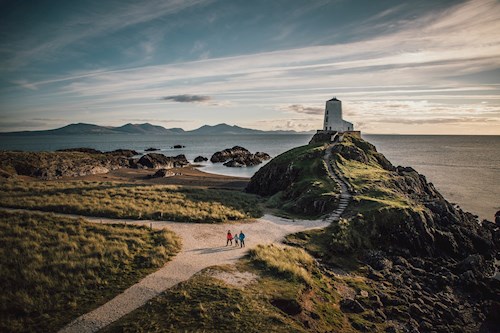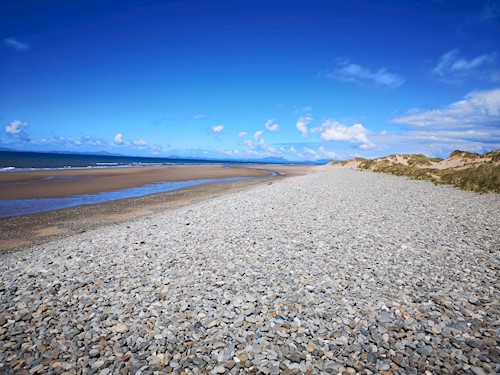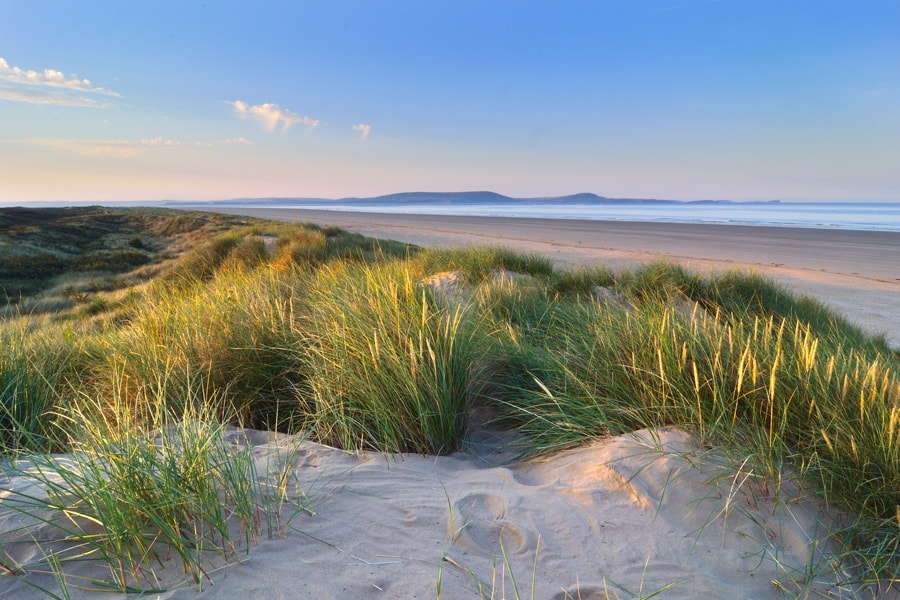I feel we talk a lot about what we’ve missed over the last year. We’ve been robbed of so much during the pandemic, but actually the most precious of all are the things which are free, and right on our doorstep.
There’s no denying that a family trip to the beach, a walk along the dunes with our beloved pets, or maybe a picnic looking out at the incredible view, will be top of many of our post-covid lists.

Sand dunes are the heart of our beaches. They are more than just an accumulation of sand grains shaped into a mound or ridge by the wind. They are wild, iconic landscapes. They are biodiversity hotspots where carpets of orchids still survive alongside song birds, butterflies, and a wide array of endangered insects.
Dunes are prized by locals and visitors for their unique character, a backdrop to a day on the beach and every child’s perfect natural playground.
Healthy dunes have plenty of bare sand and are constantly in motion. Sand hills are built, blow out and are built again. Unique and specialised communities of plants and invertebrates are constantly re-colonising the open space.
As well as being reservoirs of biodiversity, our sand dunes help safeguard our wider environment by providing a natural solution to flood defence and coastal erosion as well as maintaining water flows and supporting vital pollinators, such as bees and butterflies.
To keep our dunes in peak condition needs a little more than mother nature herself, and that’s where the SANDS OF LIFE project comes in. It’s a major conservation project to revitalise sand dunes across Wales which runs until December 2022. It will recreate natural movement in the dunes and rejuvenate habitats which are home to some of our rarest wildlife.

The £4 million project, led by Natural Resources Wales (NRW), will restore over 2400 hectares of sand dunes, across four Special Areas of Conservation, on 10 separate Welsh sites:
ANGLESEY & MENAI STRAIT
- Tywyn Aberffraw
- Newborough Warren
- Morfa Dinlle

MEIRIONYDDSHIRE
- Morfa Harlech
- Morfa Dyffryn

CARMARTHEN BAY
- Laugharne – Pendine Burrows
- Pembrey Coast
- Whiteford Burrows

BRIDGEND
- Kenfig
- Merthyr Mawr

To find out more about the project, and how their work has been going through a very difficult lockdown, we spoke to the Communications and Interpretation Officer, Danny Griffith. He told us about the aims of SANDS OF LIFE, and shared some lovely pictures of their ongoing work. Also a big thanks to Fred Pedley and Jim Stephenson for the Anglesey 1949 home movie. It just shows that when it comes to a visit to the beach, life has always been the same – family, food and fun.
As Danny said, the project has a lot of work ahead of it, and we can all do our bit to help support the massive changes they are making.
Through Sands of LIFE, they are engaging with local communities to raise awareness of the value and importance of sand dunes to people and the environment. The project will also enable knowledge-sharing on sand dune management with others both in Wales and further afield.
The project will also contribute towards Wales’ Wellbeing Goals by:
- supporting traditional farming practice
- creating economic opportunities for business
- training and developing a new generation of environmental managers
- enabling more people to use and enjoy the dunes, which in turn encourages exercise, health and wellbeing
To find out more about the project and look at the sites they are currently working on, just go here – SANDS OF LIFE.






